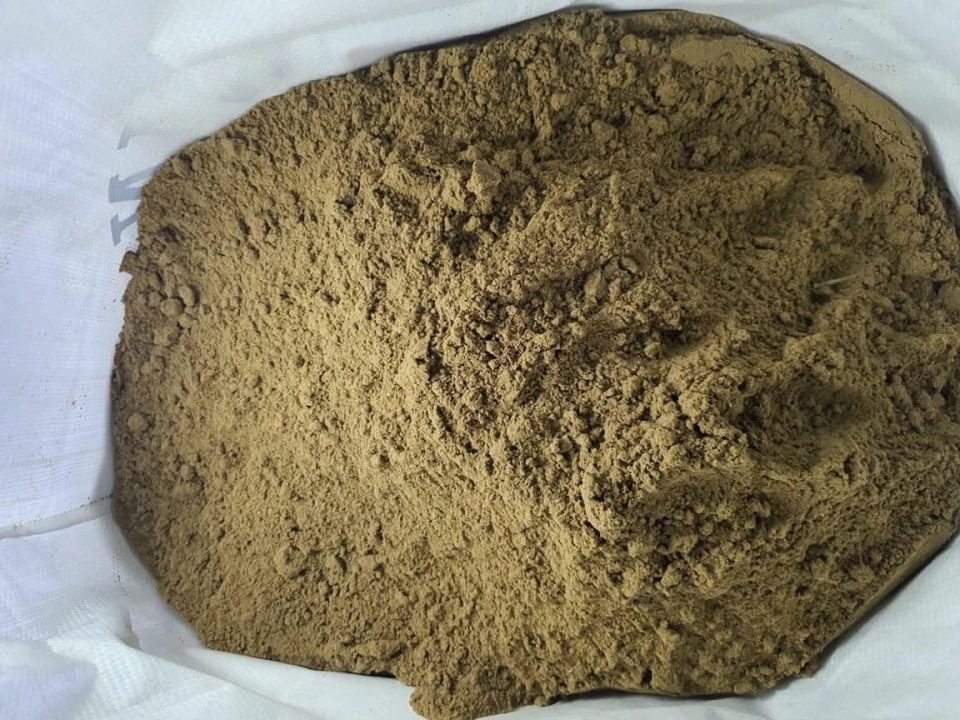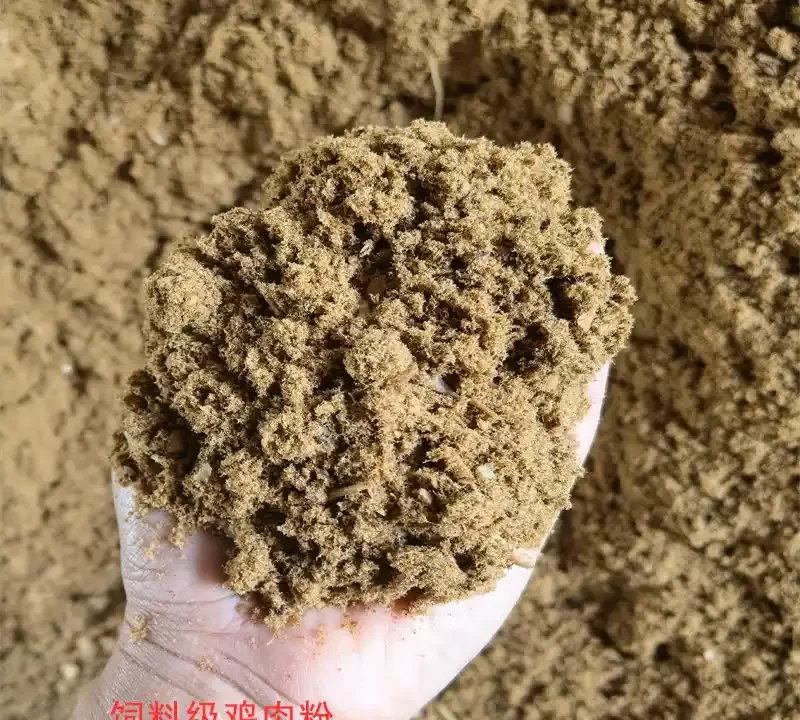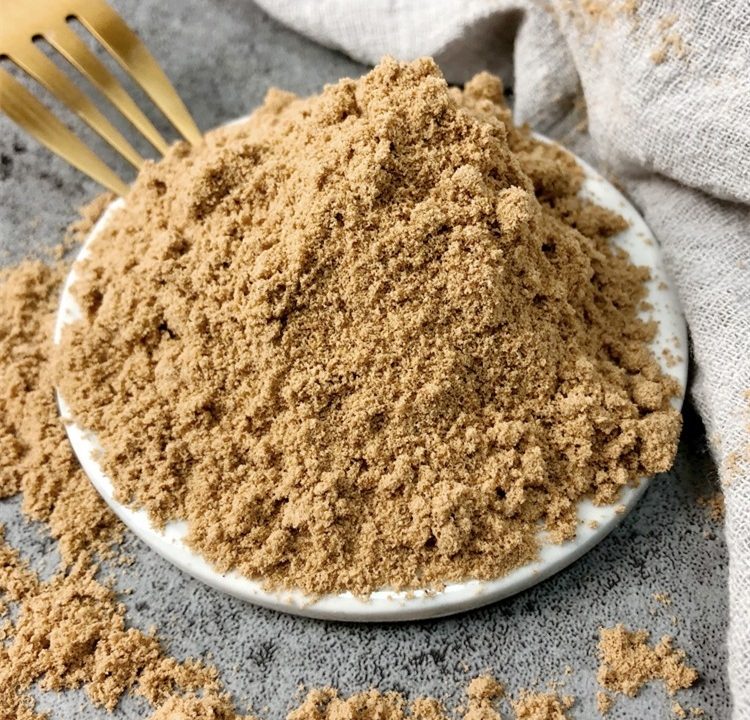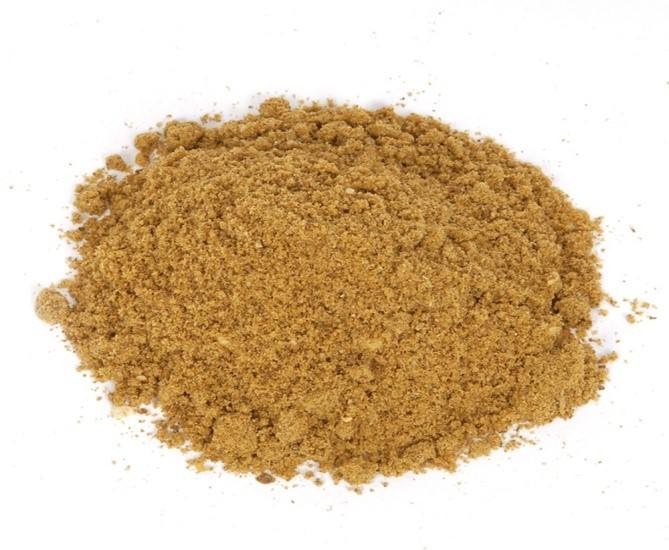Chicken Bone Powder

Chicken Liver Powder
May 6, 2025
Certificate of Analysis for Chicken Bone Powder
May 13, 20251. Overview of Chicken Bone Powder
Chicken bone powder is produced by rendering chicken bones into a fine, dry powder. It is primarily used as a source of calcium and phosphorus in pet food and animal feed, and occasionally in human food products (e.g., as a natural calcium supplement in fortified foods). Its high ash content and mineral density make it distinct from other chicken-derived ingredients like chicken meal or chicken liver powder.
2. Production Process
-
Sourcing: Chicken bones are collected from poultry processing plants after meat removal, ensuring they are free from contaminants like feathers or entrails.
-
Rendering: The bones are cooked at high temperatures (130–150°C) to remove moisture, fat, and any remaining soft tissue. The resulting solids are ground into a fine powder.
-
Sterilization: High-temperature rendering ensures microbial safety (e.g., Salmonella absent in 25g).
-
Optional Processing: Some manufacturers may add a hydrolysis step to improve digestibility, though this is less common for bone powder compared to by-products like feathers.
-
Quality Control: The powder is tested for mineral content (calcium, phosphorus), heavy metals (e.g., lead ≤5 mg/kg), and microbial safety (e.g., total plate count ≤10,000 CFU/g).
Key Note: Chicken bone powder focuses on the skeletal structure, resulting in a high ash content (typically 50–60%), unlike protein-focused ingredients like chicken meal or chicken liver powder.
3. Standards for Chicken Bone Powder
Chicken bone powder must meet regulatory and industry standards, with a focus on mineral content and safety due to its composition.
3.1 Regulatory Standards
-
AAFCO (Association of American Feed Control Officials): Defines chicken bone powder as a rendered product of chicken bones, free from added blood, feathers, or extraneous materials. It must meet safety standards for pet food ingredients (e.g., lead ≤5 mg/kg, Salmonella absent in 25g).
-
FDA: Requires compliance with 21 CFR Part 113 for thermally processed products, ensuring microbial safety.
-
China (GB Standards): GB 2760 (Food Additive Standard) and GB 29921 (Pathogen Limits) apply, with limits on heavy metals (e.g., cadmium ≤1 mg/kg) and microbial counts (e.g., total plate count ≤10,000 CFU/g).
3.2 Industry Standards
-
Ash Content: Typically ≥50%, reflecting the high mineral content of bones.
-
Calcium Content: Should be ≥20%, as bones are a primary calcium source.
-
Phosphorus Content: Should be ≥10%, ensuring a balanced Ca:P ratio (ideal range: 1.5:1 to 2:1).
-
Moisture Content: ≤5% to ensure shelf stability.
-
Absence of Additives: For “pure” or “natural” claims, it should be free from artificial colors or preservatives.
4. Nutritional Composition and Parameters
Chicken bone powder is primarily a mineral source, with lower protein and fat compared to other chicken-derived ingredients. Below is a detailed breakdown, followed by a comparison with chicken liver powder, chicken meal, and poultry by-product meal.
4.1 Nutritional Data Table
Table 1: Nutritional Composition of Chicken Bone Powder
|
Parameter
|
Chicken Bone Powder
|
Notes
|
|---|---|---|
|
Protein (%)
|
25.0 ± 2.0
|
Low, as bones are mineral-focused
|
|
Fat (%)
|
5.0 ± 1.0
|
Minimal, most fat removed during rendering
|
|
Ash (%)
|
55.0 ± 3.0
|
High, due to mineral content
|
|
Moisture (%)
|
4.0 ± 0.5
|
Ensures shelf stability
|
|
Calcium (%)
|
22.0 ± 1.5
|
Primary mineral, critical for bone health
|
|
Phosphorus (%)
|
11.0 ± 1.0
|
Supports skeletal development
|
|
Digestibility (%)
|
65 ± 4
|
Lower due to high mineral content
|
4.2 Comparison with Chicken Liver Powder, Chicken Meal, and Poultry By-Product Meal
Table 2: Comparison of Chicken Bone Powder with Other Chicken-Derived Ingredients
|
Parameter
|
Chicken Bone Powder
|
Chicken Liver Powder
|
Chicken Meal
|
Poultry By-Product Meal
|
|---|---|---|---|---|
|
Source
|
Chicken bones only
|
Chicken livers only
|
Chicken flesh, skin, bones
|
Poultry organs, feet, heads
|
|
Protein (%)
|
25.0 ± 2.0
|
65.0 ± 2.0
|
68.0 ± 1.5
|
62.0 ± 2.0
|
|
Fat (%)
|
5.0 ± 1.0
|
15.0 ± 1.5
|
14.0 ± 1.0
|
12.0 ± 1.5
|
|
Ash (%)
|
55.0 ± 3.0
|
8.0 ± 0.5
|
11.0 ± 0.8
|
14.0 ± 1.0
|
|
Calcium (%)
|
22.0 ± 1.5
|
0.5 ± 0.1
|
3.5 ± 0.3
|
4.5 ± 0.5
|
|
Phosphorus (%)
|
11.0 ± 1.0
|
0.3 ± 0.1
|
1.8 ± 0.2
|
2.5 ± 0.3
|
|
Vitamin A (IU/100g)
|
100 ± 50
|
25,000 ± 2,000
|
500 ± 100
|
1,000 ± 200
|
|
Digestibility (%)
|
65 ± 4
|
80 ± 3
|
83 ± 2
|
72 ± 3
|
|
Heavy Metal Risk (Lead, mg/kg)
|
2.5 ± 0.4
|
3.0 ± 0.5
|
2.0 ± 0.3
|
4.0 ± 0.6
|
Analysis:
-
Protein and Digestibility: Chicken bone powder has the lowest protein (25%) and digestibility (65%) due to its focus on minerals rather than protein. Chicken meal (68%, 83%) and chicken liver powder (65%, 80%) are far superior in this regard, while poultry by-product meal (62%, 72%) falls in between.
-
Mineral Content: Chicken bone powder excels in calcium (22%) and phosphorus (11%), making it a top choice for skeletal health. It far surpasses chicken liver powder (0.5% Ca, 0.3% P), chicken meal (3.5% Ca, 1.8% P), and poultry by-product meal (4.5% Ca, 2.5% P).
-
Micronutrients: Chicken bone powder has negligible vitamin A (100 IU/100g) compared to chicken liver powder (25,000 IU/100g), reflecting its focus on minerals rather than vitamins.
-
Heavy Metal Risk: Chicken bone powder has a low risk of heavy metal accumulation (lead: 2.5 mg/kg) compared to chicken liver powder (3.0 mg/kg) and poultry by-product meal (4.0 mg/kg), as bones are less likely to bioaccumulate toxins than organs.
5. Identification of Pure Natural Chicken Bone Powder
To identify pure natural chicken bone powder (free from additives or adulterants), methods similar to those for other chicken-derived ingredients can be applied, with a focus on mineral content.
5.1 Analytical Methods
-
Proximate Analysis: Confirms high ash (≥50%), calcium (≥20%), and phosphorus (≥10%). Low protein (20–30%) is expected.
-
X-Ray Diffraction (XRD): Identifies calcium phosphate crystals (e.g., hydroxyapatite), confirming bone-derived material.
-
ICP-MS (Inductively Coupled Plasma Mass Spectrometry): Measures calcium (≥20%) and phosphorus (≥10%), and checks for heavy metals (e.g., lead ≤5 mg/kg).
-
Microbiological Testing: Ensures low microbial counts (e.g., total plate count ≤10,000 CFU/g, Salmonella absent in 25g).
-
Sensory Analysis: Pure chicken bone powder has a neutral odor, white to light gray color, and a fine, gritty texture.
5.2 Chemical Indicators
-
High Calcium and Phosphorus: Confirms bone as the primary source.
-
Low Protein and Fat: Indicates minimal soft tissue content.
-
Absence of Additives: No artificial colors, flavors, or preservatives for “natural” claims.
6. Applications and Benefits
6.1 Pet Food
-
Calcium Supplement: Chicken bone powder is used to meet calcium requirements in pet food (e.g., AAFCO recommends 0.6–1.2% calcium in dog food). A 5% inclusion rate can provide 1.1% calcium to the diet.
-
Dental Health: Its gritty texture can aid in dental abrasion, reducing tartar buildup in pets.
-
Cost-Effective: Provides a natural calcium source without synthetic additives like calcium carbonate.
6.2 Animal Feed
-
Used in poultry, swine, and aquaculture feed to support skeletal development, especially in young animals. For example, 2–3% inclusion in broiler feed can meet calcium needs for bone growth.
6.3 Human Food (Limited Use)
-
Used as a natural calcium fortificant in products like bone broth powders, health supplements, or functional foods. Its neutral flavor makes it more versatile than chicken liver powder in this context.
Benefit Over Other Ingredients: Chicken bone powder’s high calcium and phosphorus content make it the best choice for skeletal health, surpassing chicken liver powder, chicken meal, and poultry by-product meal in this aspect.
7. Numerical Analysis of Quality
7.1 Statistical Comparison
Using data from Table 2, we can compare chicken bone powder with the other ingredients statistically.
-
ANOVA for Calcium Content:
-
Chicken Bone Powder: 22.0 ± 1.5
-
Chicken Liver Powder: 0.5 ± 0.1
-
Chicken Meal: 3.5 ± 0.3
-
Poultry By-Product Meal: 4.5 ± 0.5
-
Result: F(3, 12) = 250, p < 0.001 (highly significant). Chicken bone powder has significantly higher calcium content.
-
-
ANOVA for Protein Content:
-
Chicken Bone Powder: 25.0 ± 2.0
-
Chicken Liver Powder: 65.0 ± 2.0
-
Chicken Meal: 68.0 ± 1.5
-
Poultry By-Product Meal: 62.0 ± 2.0
-
Result: F(3, 12) = 80, p < 0.001 (highly significant). Chicken bone powder has the lowest protein content.
-
7.2 Quality Scoring Model
A scoring model can quantify overall quality based on calcium, protein, and digestibility (adjusted for bone powder’s purpose):
Score = 0.5 × Calcium (%) + 0.3 × Protein (%) + 0.2 × Digestibility (%)
-
Chicken Bone Powder: 0.5 × 22 + 0.3 × 25 + 0.2 × 65 = 11 + 7.5 + 13 = 31.5
-
Chicken Liver Powder: 0.5 × 0.5 + 0.3 × 65 + 0.2 × 80 = 0.25 + 19.5 + 16 = 35.75
-
Chicken Meal: 0.5 × 3.5 + 0.3 × 68 + 0.2 × 83 = 1.75 + 20.4 + 16.6 = 38.75
-
Poultry By-Product Meal: 0.5 × 4.5 + 0.3 × 62 + 0.2 × 72 = 2.25 + 18.6 + 14.4 = 35.25
Interpretation: Chicken bone powder scores lower (31.5) overall due to its low protein and digestibility, but its high calcium content makes it valuable for specific purposes. Chicken meal scores highest (38.75) for general nutritional quality.
8. Challenges and Limitations
-
Low Protein Content: At 25%, chicken bone powder cannot serve as a primary protein source, requiring combination with ingredients like chicken meal.
-
Digestibility: Its high mineral content reduces digestibility (65%), potentially leading to more undigested waste in pets.
-
Risk of Over-Supplementation: Excessive calcium (e.g., >2.5% in diet) can cause skeletal issues in pets, such as hypercalcemia or urinary stones.
-
Heavy Metal Risk: While lower than organ-based ingredients, bones can still accumulate lead (2.5 mg/kg), requiring testing.
9. Conclusion
Chicken bone powder is a specialized ingredient with a high mineral content (calcium: 22%, phosphorus: 11%), making it ideal for supporting skeletal health in pet food and animal feed. Compared to chicken liver powder, chicken meal, and poultry by-product meal, it has the lowest protein (25%) and digestibility (65%) but excels in calcium and phosphorus delivery, far surpassing the others (e.g., chicken liver powder: 0.5% Ca). Identification of pure natural chicken bone powder involves proximate analysis, XRD for mineral structure, and microbial testing. Numerical analysis highlights its niche role (score: 31.5), with significant advantages for calcium supplementation but limited overall nutritional value compared to chicken meal (38.75). It is best used as a complementary ingredient in formulations requiring high mineral content, with careful monitoring to avoid over-supplementation.
Related posts
October 18, 2025
October 10, 2025
October 3, 2025






